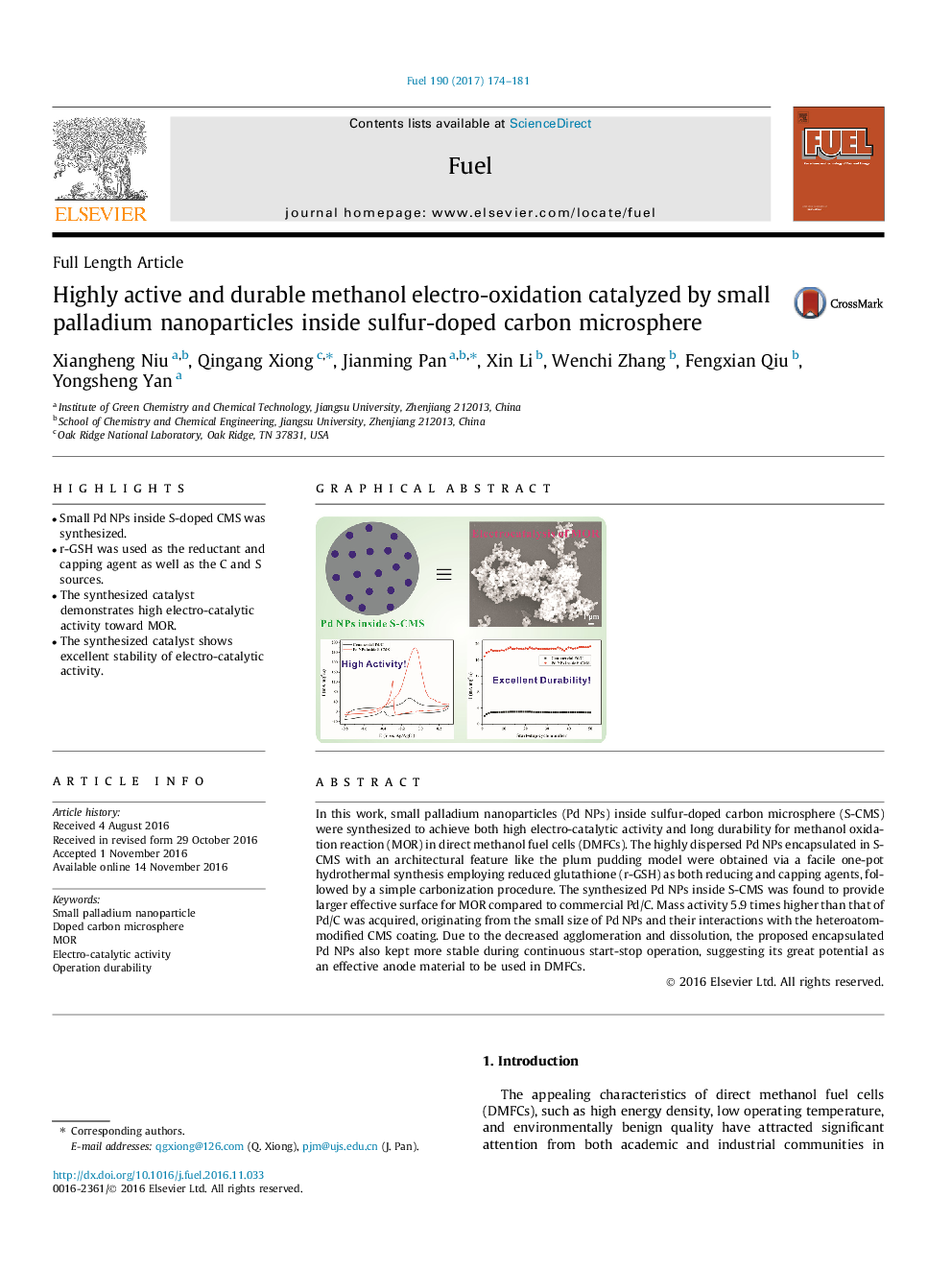| Article ID | Journal | Published Year | Pages | File Type |
|---|---|---|---|---|
| 6475561 | Fuel | 2017 | 8 Pages |
â¢Small Pd NPs inside S-doped CMS was synthesized.â¢r-GSH was used as the reductant and capping agent as well as the C and S sources.â¢The synthesized catalyst demonstrates high electro-catalytic activity toward MOR.â¢The synthesized catalyst shows excellent stability of electro-catalytic activity.
In this work, small palladium nanoparticles (Pd NPs) inside sulfur-doped carbon microsphere (S-CMS) were synthesized to achieve both high electro-catalytic activity and long durability for methanol oxidation reaction (MOR) in direct methanol fuel cells (DMFCs). The highly dispersed Pd NPs encapsulated in S-CMS with an architectural feature like the plum pudding model were obtained via a facile one-pot hydrothermal synthesis employing reduced glutathione (r-GSH) as both reducing and capping agents, followed by a simple carbonization procedure. The synthesized Pd NPs inside S-CMS was found to provide larger effective surface for MOR compared to commercial Pd/C. Mass activity 5.9 times higher than that of Pd/C was acquired, originating from the small size of Pd NPs and their interactions with the heteroatom-modified CMS coating. Due to the decreased agglomeration and dissolution, the proposed encapsulated Pd NPs also kept more stable during continuous start-stop operation, suggesting its great potential as an effective anode material to be used in DMFCs.
Graphical abstractDownload full-size image
